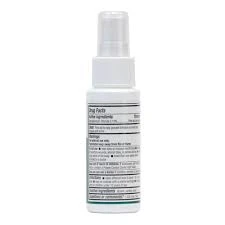what is poly aluminium chloride
What is Poly Aluminium Chloride?
Poly aluminium chloride (PAC) is an inorganic polymer and a widely used coagulant in water treatment processes. It is synthesized from the reaction of aluminium hydroxide and hydrochloric acid, resulting in a flocculant that is essential for various applications, particularly in municipal and industrial water treatment.
Chemical Composition and Structure
The chemical formula of poly aluminium chloride varies based on the preparation process, but its general structure can be expressed as Aln(OH)mCl3n-m. Depending on the degree of polymerization (n), the properties and effectiveness of PAC can differ significantly. Typically, it comes in several forms, including liquid and powdered variants, allowing flexibility in application depending on specific requirements.
Production Process
The production of PAC involves several steps. First, aluminum ore is refined to obtain alumina, which is then reacted with a controlled amount of hydrochloric acid. Through the hydrolysis process, poly aluminium chloride is produced by the combination of aluminum ions with hydroxide and chloride ions. The precise control of pH and reagents during this synthesis not only impacts the molecular weight of the product but also its charge density, which are crucial to its effectiveness as a coagulant.
Mechanism of Action
PAC functions primarily through charge neutralization, bridging, and enmeshment processes — a combination of physical and chemical interactions. Upon addition to water, the positively charged PAC molecules attract and neutralize negatively charged particles, causing them to aggregate into larger flocs. These flocs can then be easily removed, leaving behind clearer water. This makes PAC highly effective for treating wastewater and drinking water, where the removal of suspended solids, colloids, and other impurities is necessary.
Applications
One of the primary uses of PAC is in water treatment. It has gained popularity due to its effectiveness at lower dosages compared to conventional coagulants like aluminum sulfate. Benefits include a more rapid coagulation process, improved sedimentation rates, and the capacity to function efficiently across a wide range of pH levels.
1. Municipal Water Treatment PAC is widely employed in drinking water plants to remove turbidity and organic matter. Its enhanced sedimentation properties lead to cleaner water, which is essential for public health.
2. Wastewater Treatment In industrial settings, PAC is used to treat effluent water before disposal, as it effectively removes heavy metals, phosphorus, and other contaminants.
what is poly aluminium chloride

3. Paper and Pulp Industry PAC is also utilized in the paper manufacturing process, acting as a retention aid, which improves fiber retention and reduces the amount of chemicals required.
5. Textile and Dye Industry In the textile industry, PAC is used for dyeing processes and helps clarify water used in dyeing fabrics.
Advantages of Poly Aluminium Chloride
1. Improved Performance Since PAC performs effectively over a broader pH range, it is adaptable for varying conditions in treatment facilities.
2. Rapid Settling PAC leads to rapid floc formation and settling, enhancing the efficiency of treatment plants and minimizing the footprint required for sedimentation basins.
3. Reduction in Sludge Volume Compared to traditional aluminum salts, PAC typically produces less sludge, which reduces disposal costs and makes it more environmentally friendly.
4. Cost-Effectiveness The efficiency of PAC at lower dosages results in reduced chemical costs and transportation expenses.
Environmental Considerations
While PAC has several advantages, its use must be managed carefully to mitigate potential risks. Excessive doses can lead to aluminum accumulation in the environment, raising concerns regarding toxicity. Therefore, monitoring the application rates and maintaining compliance with environmental regulations is critical.
Conclusion
Poly aluminium chloride is an indispensable component in modern water treatment practices. Its effectiveness across a range of applications, combined with its environmental benefits, makes it a valuable tool for ensuring water quality. As global demands for clean water increase, the relevance of PAC in both municipal and industrial contexts is likely to grow, underscoring the importance of continued research and development in this field.
-
Water Treatment with Flocculant Water TreatmentNewsJun.12,2025
-
Polymaleic AnhydrideNewsJun.12,2025
-
Polyaspartic AcidNewsJun.12,2025
-
Enhance Industrial Processes with IsothiazolinonesNewsJun.12,2025
-
Enhance Industrial Processes with PBTCA SolutionsNewsJun.12,2025
-
Dodecyldimethylbenzylammonium Chloride SolutionsNewsJun.12,2025





